Up ahead, turrets frame a dome above a grand hall finished in marble, glass, and gold. But this isn’t another European cathedral. You’ve arrived at Belgium’s Antwerp Central Station.
Whether neo-Baroque or contemporary, the world’s most beautiful train stations were designed to make a big impression. Many were constructed during the late 19th century, a golden era when train travel was new, intriguing, and glamorous. Today, stations from every era continue to impress, attracting travelers who aren’t even catching a train.
It’s not surprising that these stations have withstood everything from wars to urban development. Train stations weren’t just transportation hubs; they became symbols of entire empires, as rulers transported their architectural and engineering know-how as far as India and Mozambique. Equally ambitious train routes spanned entire continents; most notably, the luxurious Orient-Express linked Paris to Istanbul’s Art Nouveau Sirkeci Station.
Train travel has since fallen in and out of favor. Recently, the growth of high-speed rail has been accompanied by interest in restoring and building iconic train stations. In London, for instance, workers cleaned 300,000 pounds of dirt from the neo-Gothic red brick façade of St. Pancras and restored 8,000 glass roof panes.
And in Melbourne, a thorough overhaul has converted Southern Cross Station into a cutting-edge landmark whose undulating glass roof also serves a practical purpose: ventilating the train platforms by drawing train exhaust through the pitched domes.
It’s a welcome change after years in which train travel more often took a backseat to cars and planes, particularly in America, where some stations fell into decline or faced the wrecking ball. Detroit’s Michigan Central Station was abandoned in 1988, although broken windows and graffiti give its Beaux-Arts exterior an eerie beauty. Perhaps most infamously, New York’s gorgeous Penn Station was demolished in the 1960s, only to be replaced by the current dreary underground station.
New York has wrestled with concepts for a majestic new Penn Station and Madison Square Garden for more than a decade, so far without success. But elsewhere, cities are embracing their train stations. After all, even fliers often arrive via airport trains, which means the station is their introduction to a new destination. Still other travelers appreciate the benefits of a scenic, hassle-free train ride.
You don’t need to show up at the station hours in advance to go through airport-like security. But we recommend arriving early for a more pleasant reason: to take stock of these gorgeous cathedrals to locomotion.
Gare du Nord, Paris
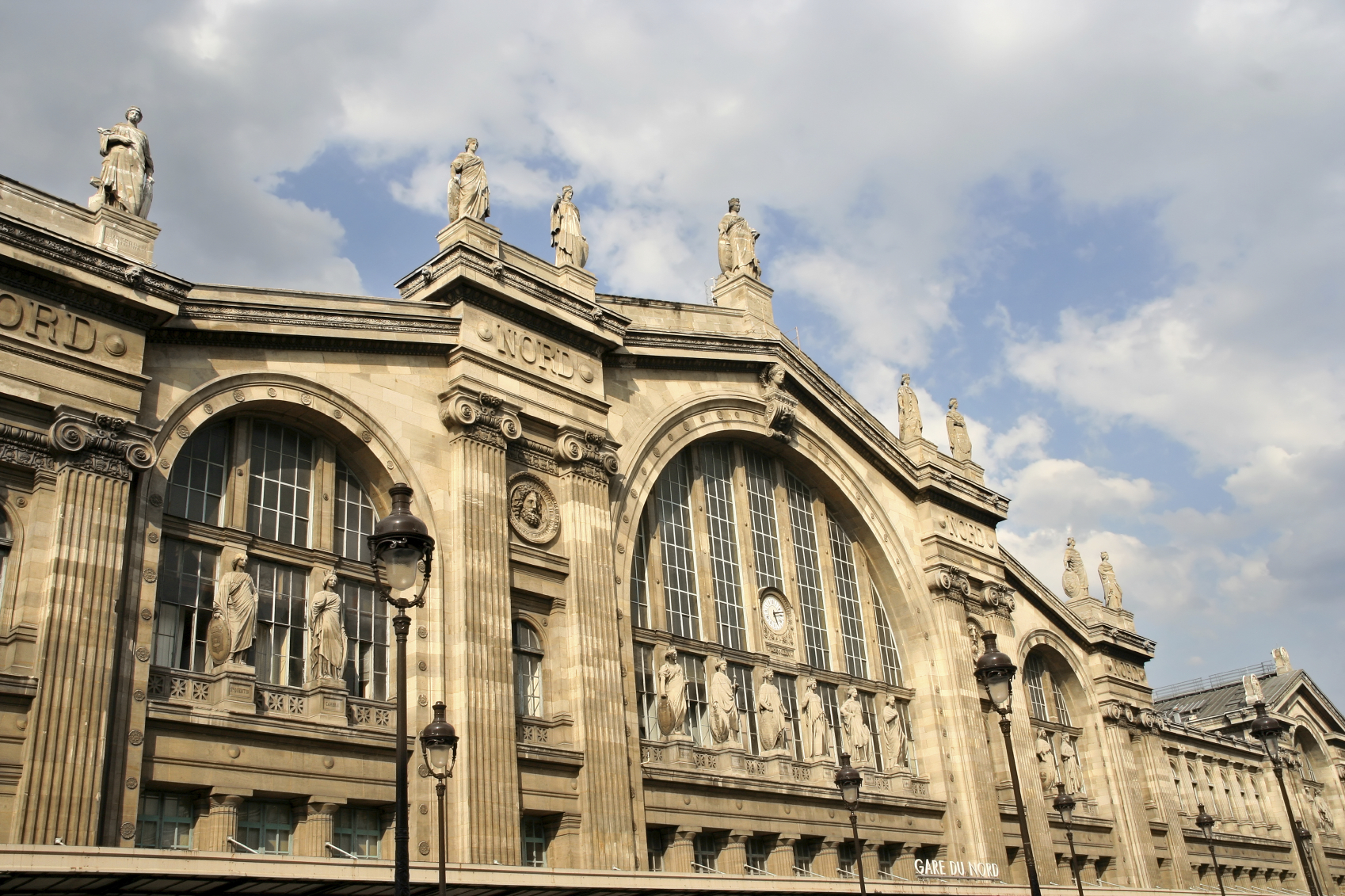
This station in the central 10th Arrondissement is one of the busiest and most picture-perfect in Europe. The façade is sculpted with 23 statues representing Amsterdam, Vienna, and other destinations served by the Chemin de Fer du Nord company. The interior is just as lovely, especially when the sun filters through the panels of the glass and cast-iron roof to the platforms below.
How to See It: Gare du Nord looks especially fine when you pull in from Charles de Gaulle airport or from London via the Eurostar. If you can’t make it overseas, look for this Neoclassical station in movies such as Amélie and The Bourne Identity.
St. Pancras International, London
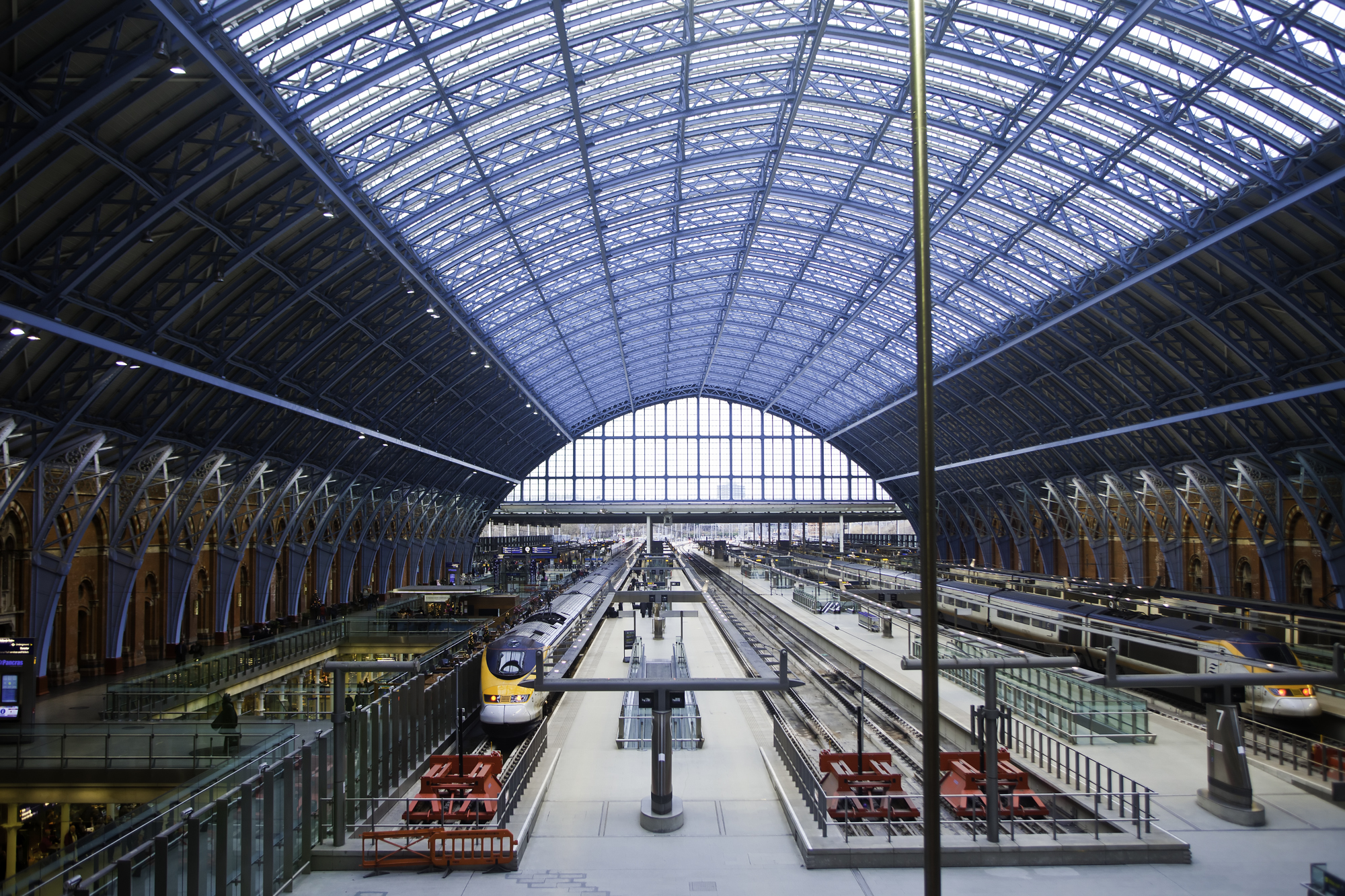
This neo-Gothic red brick façade won raves when it was unveiled in 1868. And it’s in the news again. After a 20th-century decline, St. Pancras got a recent £800 million makeover. Workers cleaned 300,000 pounds of dirt from the bricks and restored 8,000 panes of glass in the roof of the immense train shed. As a result, the station looks its part as one of the finest Victorian landmarks in London.
How to See It: Book the Chamber Suite at the newly restored St. Pancras Renaissance London Hotel for a view of the blue Barlow train shed.
CFM Railway Station, Maputo, Mozambique
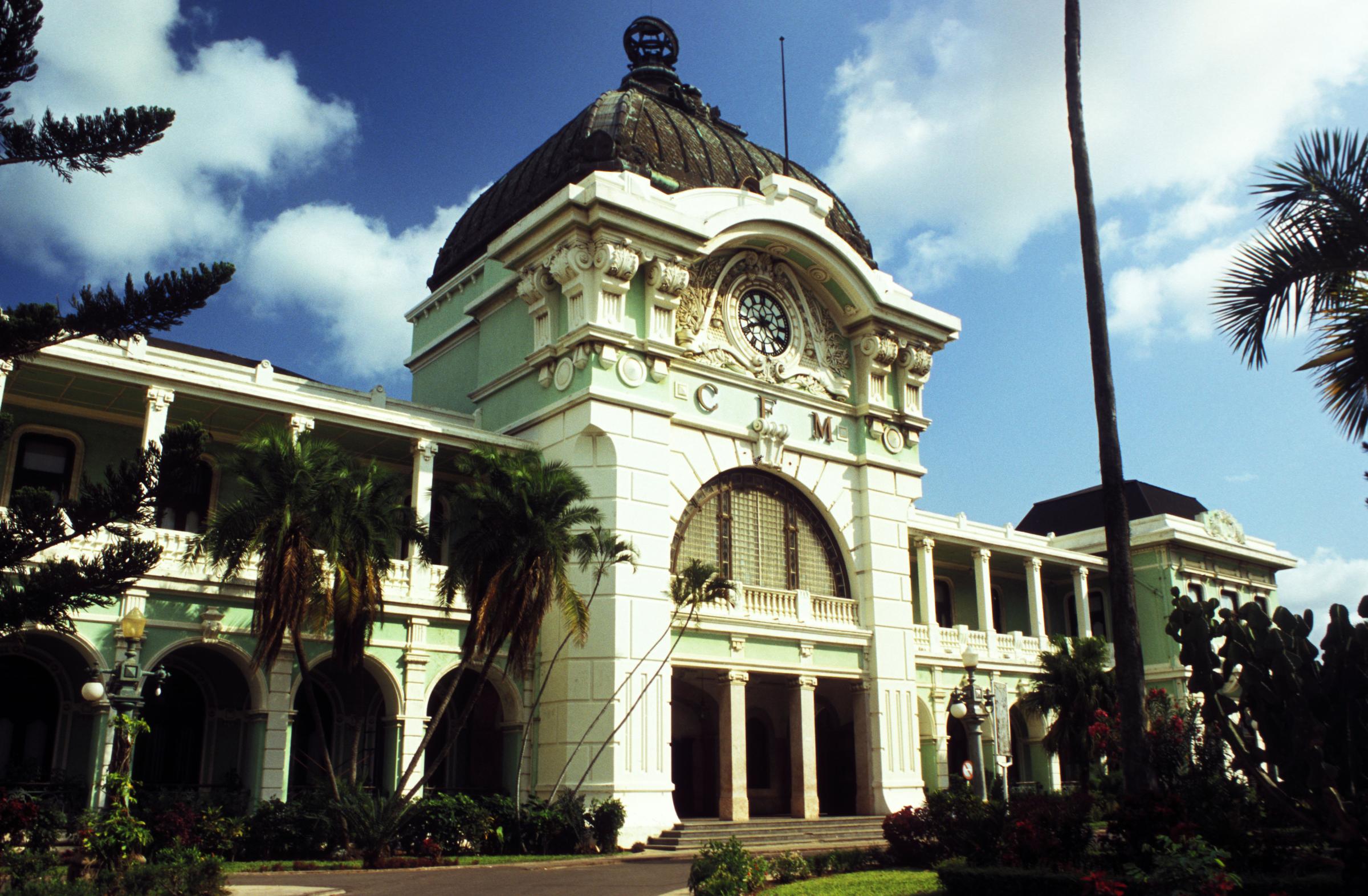
Mint-green exteriors, a large dome, and wrought-iron latticework make the capital city of Maputo’s train station an unexpected, if modest, beauty. Reportedly designed by Gustave Eiffel in the early 20th century, the station showcases several historic steam locomotives. Modern-day trains bring passengers through here daily.
How to See It: On the weekends, catch some of the city’s best live music at Ka Mfumo Jazz Café, located within CFM Railway Station.
Sirkeci Station, Istanbul

Built in 1890 as the terminus for the Orient-Express journey from Paris, the façade of this Ottoman Art Nouveau building is particularly attractive. Swaths of red brick surround the wide entrance, and stained-glass windows provide colorful splashes of light inside. Although this entrance is no longer used, people still stop to admire the interior and catch occasional performances by whirling dervishes inside the grand entry hall.
How to See It: The Venice Simplon-Orient-Express retraces the historic train route once a year in restored coaches from the 1930s. It’s never too early to book your seat—passage is already sold out for the 2011 and 2012 rides.
Southern Cross Station, Melbourne
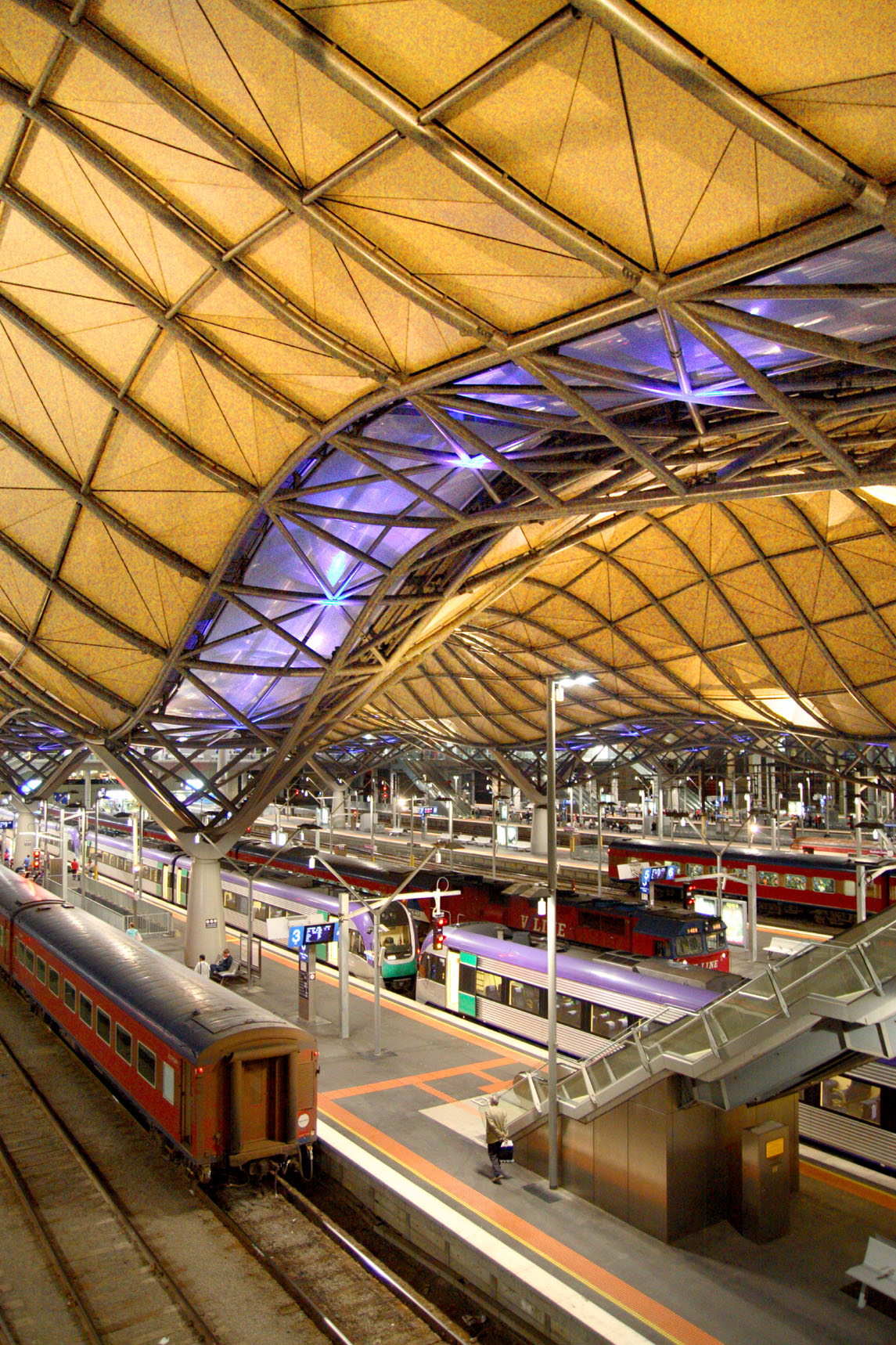
Previously called Spencer Street Station, the station got a new name in 2005 as part of an elaborate modernization project. The undulating roof, which stretches an entire city block, has been compared to a gigantic air-filled blanket floating on a forest of Y-shaped columns. The form is also the function here: fumes trapped in the domes high above the platforms escape naturally through holes cut into the top, making it a sort of breathing roof.
How to See It: Head to the western end of the station to admire the colorful details on the History of Transport mural. Originally installed in 1978, this 27-panel mural was removed and restored as part of the renovations.
Kanazawa Station, Kanazawa, Japan
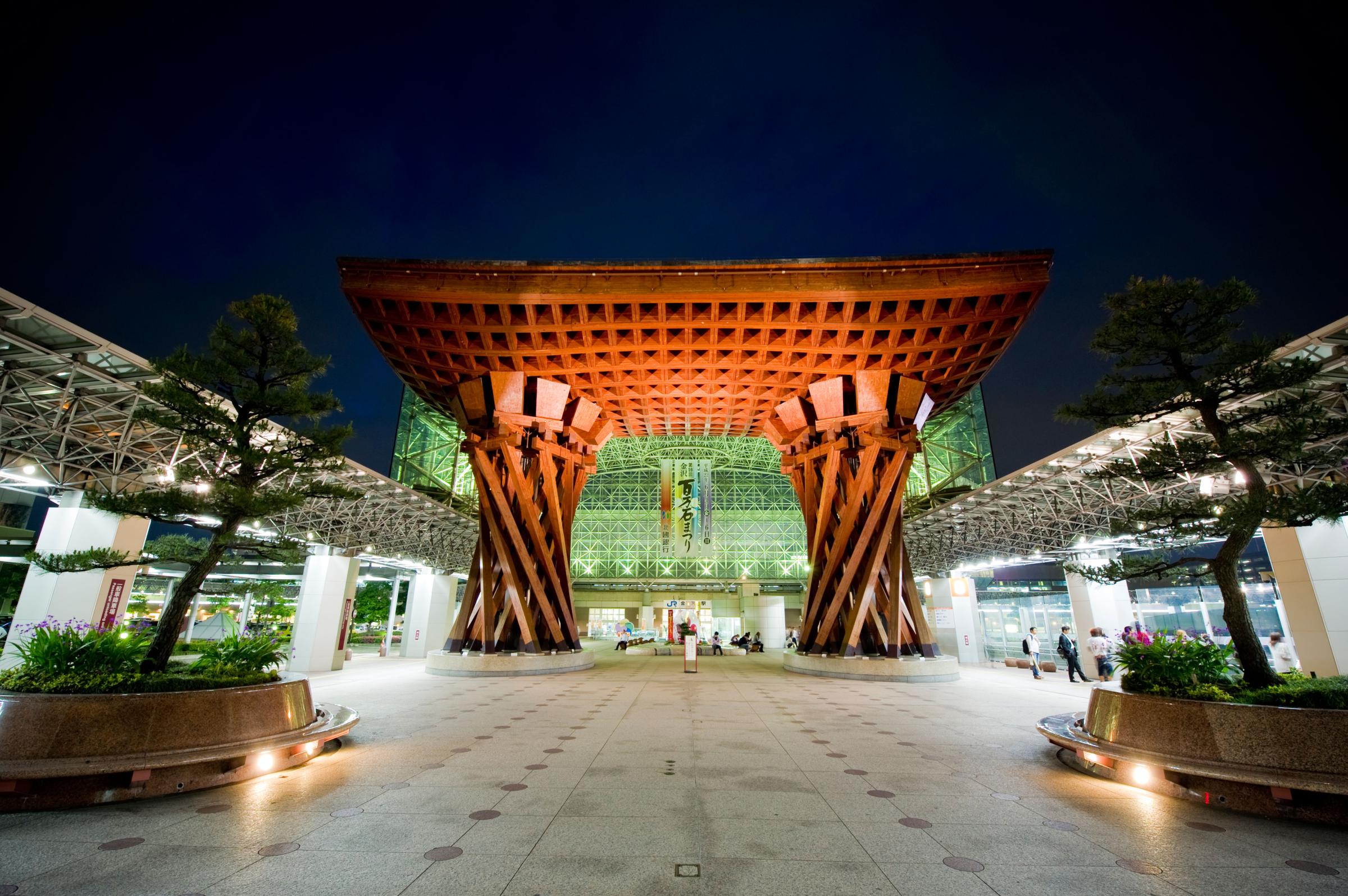
Many residents were initially dismayed by the city’s modern “entrance” when it was unveiled in 2005. The station’s wooden hand-drum-shaped Tsuzumi Gate and glass umbrella-shaped Motenashi Dome were controversial because they clashed with the traditional architecture of this old castle town—one of Japan’s best preserved as it was spared in WWII bombings. But the station has been so popular with tourists and photographers that many skeptics have come around to see the beauty in its sleek modern design.
How to See It: After admiring the futuristic design of the entrance, stop by the ultra-cool fountain out front that displays time like a digital clock.
Atocha Station, Madrid
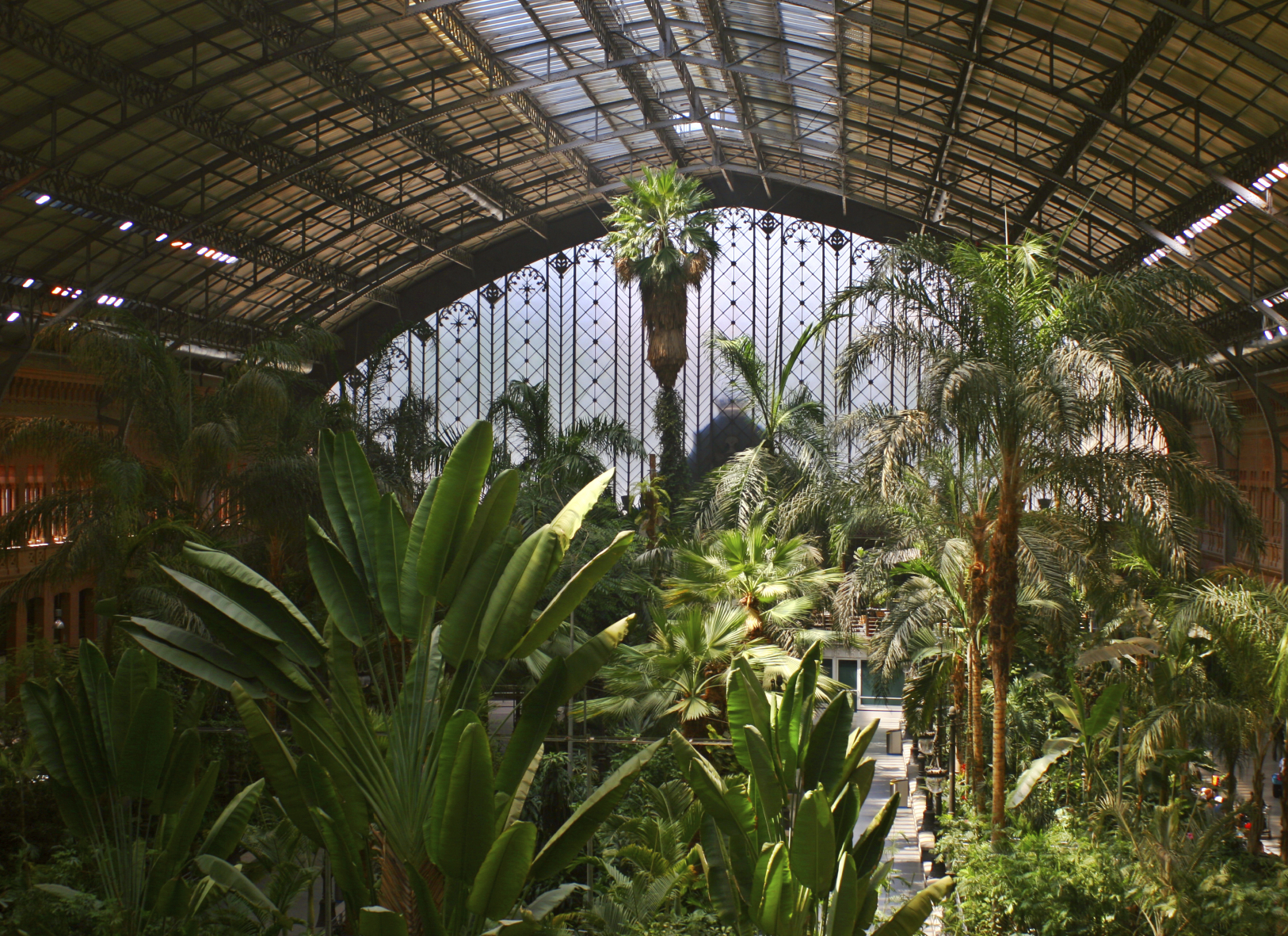
With the opening of a new terminal in 1992, locals had the inspired idea to convert the original adjacent station into a concourse with a beautiful tropical garden of palm trees reaching toward the steel and glass roof in the center—as well as a nightclub and several cafés. The new station is accessed through the old terminal, where passengers can buy tickets and wait for their trains.
How to See It: Pay your respects at the memorial to victims of the March 11, 2004, bombing. The 36-foot-tall glass cylinder, just outside the station, is inscribed with messages of condolences from the days following the attacks.
Union Station, Los Angeles

Father-son team John and Donald Parkinson contributed to this station’s design, blending the area’s Spanish Colonial heritage with then-contemporary Art Deco styles. The tall white bell tower of the station’s exterior is reminiscent of California’s missions while its main waiting room is sumptuously finished with a painted wood ceiling and multicolored marble inlays on the floor.
How to See It: On a sunny day, you can wait outdoors in the meticulously maintained rose-filled gardens and courtyards with mosaic-tiled fountains.
Chhatrapati Shivaji Terminus, Mumbai

British architect F. W. Stevens worked with local craftsmen to blend Indian architectural traditions with the Victorian Gothic Revival style. Originally named for Queen Victoria, the Empress of India, the station has endured as a Mumbai landmark—and a vital resource for the three million commuters who use it daily. The turrets and elaborate ornamentation are similar to design elements found on Moghul and Hindu palaces across the subcontinent.
How to See It: Keep your eye out for symbolic details like the figures atop the columns of the entry gates that represent Britain (the lion) and India (the tiger).
São Bento Station, Porto, Portugal
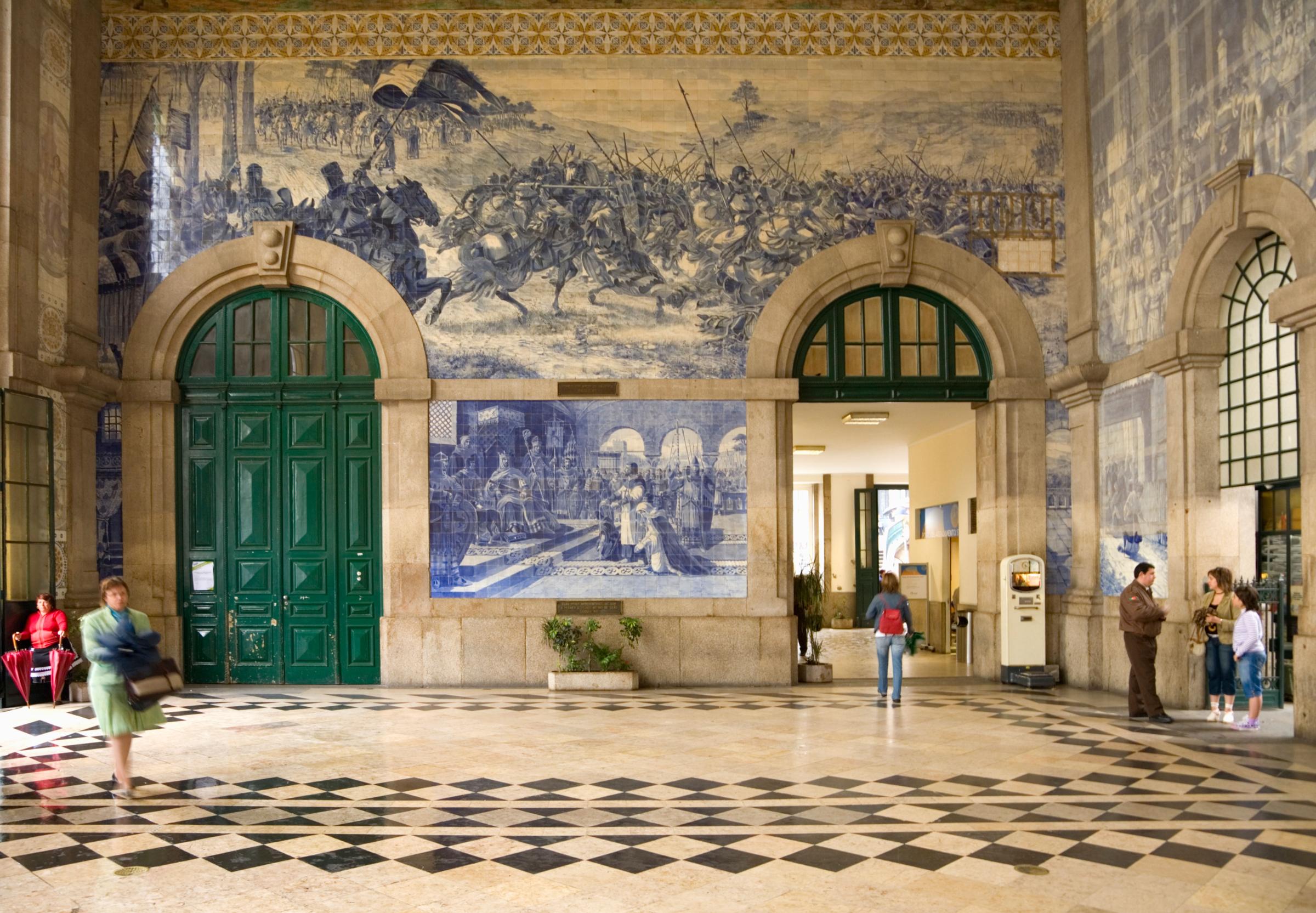
While the exterior is certainly beautiful—and brings to mind 19th-century Parisian architecture with its mansard roof and stone façade—it is the front hall that will make you gasp. The walls are covered with 20,000 splendid azulejo tin-glazed ceramic tiles, which took 11 years for artist Jorge Colaço to complete.
How to See It: Zero in on the blue and white tile panels, which depict the history of transportation as well as historic battles and artistic renderings of 14th-century King João I and Queen Philippa of Lancaster by the city’s cathedral.
Union Station, Washington, D.C.
Built in the Beaux-Arts style in the early 20th century, this grand train station was modeled after the Arch of Constantine and the Baths of Caracalla and Diocletian in Rome and finished with white granite and solid mahogany woodwork. More than 70 pounds of gold leafing was used on the coffered plaster ceiling of the main hall during an extensive restoration project in the late 1980s that cemented the station as a natural treasure.
How to See It: Union Station has hosted several presidential inaugural balls. If you can’t snag an invite, dine at the two-story Centre Café in the middle of the main hall for the best views.
Antwerp Central Station, Belgium
When this palatial neo-Baroque station was completed in 1905, it was criticized for its extravagance (it is decorated in more than 20 types of marble and stone). But it’s proven tough to resist the station’s eclectic, opulent style and enormous arched dome. You may recognize the main hall of this station from a viral video from early 2009 of 200 people performing a choreographed dance to “Do Re Mi” from The Sound of Music.
How to See It: After a large refurbishment project there are now three levels of train tracks, but the best views of the glorious iron- and glass-vaulted ceiling are from the original upper platform.
Kuala Lumpur Railway Station, Malaysia
Architect A. B. Hubback went for a Moorish style when designing this terminal in the early 1900s. Commuter trains still come through this magnificent white station regularly, though it’s referred to as the “old” station since intercity trains started using the newer KL Sentral station in 2001.
How to See It: This station serves local commuters more than tourists, but it’s worth stopping by to take in the minaret-like towers of the building and the similarly designed Railway Administration Building across the street.
Grand Central Terminal, New York
This Beaux-Arts terminal, constructed at the beginning of the 20th century, is full of dazzling architectural details. The 42nd Street façade’s giant Tiffany clock, the main concourse’s iconic information booth with its four-faced clock, and the domed gold-and-cerulean-blue ceiling painted with astronomical signs and studded with fiber-optic stars are justly famous around the world.
How to See It: People-watch while sipping cocktails at one of the bars on the palatial mezzanines, or take a self-guided audio tour to spot lesser-known gems of the terminal.
This article originally appeared on Travel + Leisure.
More from Travel + Leisure:
More Must-Reads From TIME
- The 100 Most Influential People of 2024
- The Revolution of Yulia Navalnaya
- 6 Compliments That Land Every Time
- Stop Looking for Your Forever Home
- If You're Dating Right Now , You're Brave: Column
- The AI That Could Heal a Divided Internet
- Fallout Is a Brilliant Model for the Future of Video Game Adaptations
- Want Weekly Recs on What to Watch, Read, and More? Sign Up for Worth Your Time
Contact us at letters@time.com